Are Mexico's two September earthquakes connected?

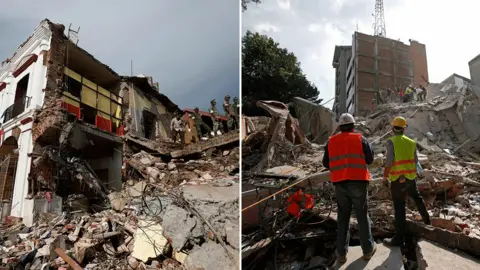 AFP
AFPMexico had barely begun to deal with the aftermath of one big quake before another rocked the country. People will naturally ask: are they related? Did one cause the other?
Seismologists will spend a good deal of time in the coming months debating this issue, but on the face of it they look to be unconnected.
The 7 September, magnitude 8.1 event certainly struck a similar region of the tectonic boundary, but the hypocentre - the point of origin within the Earth - was some 650km (400 miles) from Tuesday's magnitude 7.1.
If the second quake were an aftershock you would normally expect a closer proximity, say seismologists - within 100km. That's not a definitive statement and scientists are sure to pore over the data as it comes in. Perhaps they will eventually identify a way in which stress was transferred within the crust.
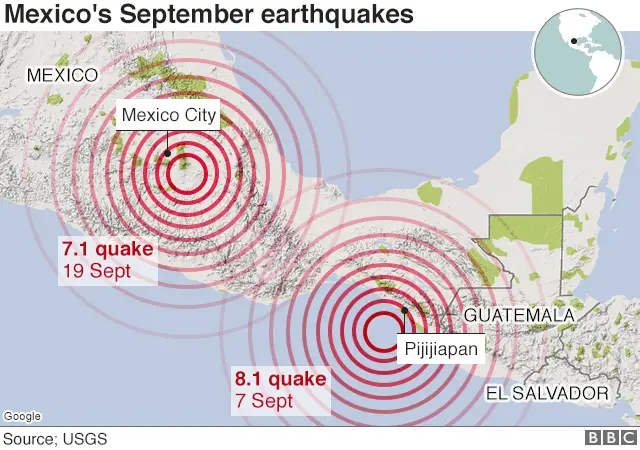
What is related, for sure, is the driver. Mexico sits above three large tectonic plates. Both the 7 and 19 September events occurred where the Cocos plate, which carries the Pacific Ocean floor, dives under the North American plate, the platform for most of the Mexican landmass.
The Cocos plate is converging at a rate of about 75mm (nearly 3 inches) a year, and does a kind of kink as it descends, making a steep downward movement before flattening out, before then dipping again.
It is at the second point of descent that Tuesday's quake originated, a few tens of kilometres down.
Computer models are now used to estimate the likely casualties of a big earthquake. Within a couple of hours of Tuesday's tremor, these forecasts suggested we could expect something up to 5,000 injured and more than 200 dead.
These numbers may well be an underestimate, certainly when you consider the way the death count has been rising in recent hours.
So much can depend on what time of day a quake occurs.
If it is during daylight hours, as was the case here, one weakly built school can kill a lot of children. The emerging story from the Enrique Rébsamen school is a chilling underscore to that possibility.
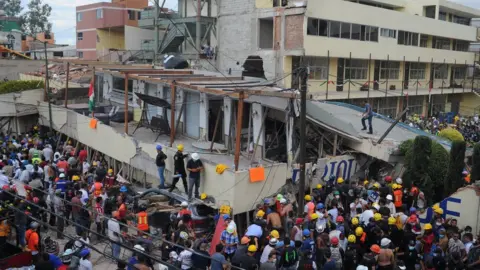 EPA
EPAThe earthquake on 7 September was more than 30 times more energetic than the new one, but the magnitude does not tell the whole story. Tuesday's event was closer to more populated areas, and in Mexico City it impacted an urban centre which sits on the types of loose soils that amplify the shaking.
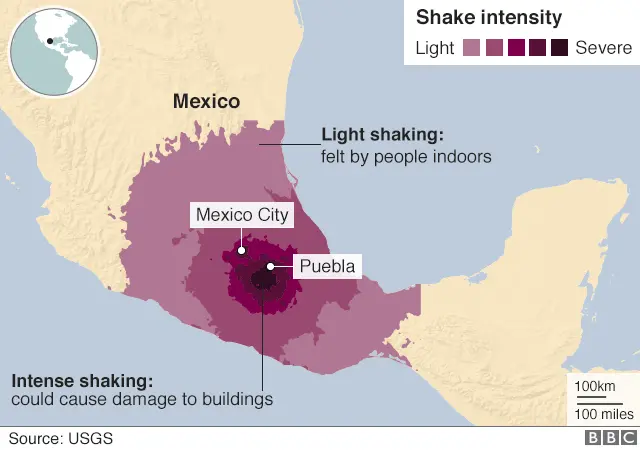
Preparedness will have had the effect of limiting casualties. Mexico is one of the most seismically active places on Earth, and it will have learnt from the devastation of 1985 when a magnitude 8 killed up to 10,000 people and left 30,000 others injured. Tuesday was the 32nd anniversary.
One outcome from that tragic event was the establishment of an early warning system - Sistema de Alerta Sísmica Mexicano (SASMEX). It was the world's first.
The system relies on a network of sensors being able to pick up the arrival of a quake's fast-moving seismic waves (the so-called P-waves) ahead of its slower moving ones. It is the later arriving S-waves, as they are known, that produce the destructive shaking.
The warning, depending on the distance from the origin of the quake, can be on the order of just seconds, but this is still sufficient time to adopt the classic drills, such as "drop, cover and hold on" (Tírese, Cúbrase y Agárrese).
There are videos online of people doing just this. In other words, the warning even gave people time to start up the camera on their phone.
I have seen suggestions that some citizens may have ignored the warning because there was a practice sounding of the alarms and sirens earlier in the day - something that always happens on the anniversary of the 85 quake. But it is also true that many people will have reacted in swift and smart ways simply because their awareness of the dangers had been heightened following 7 September.
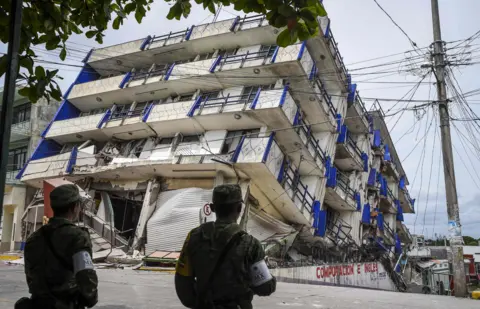 AFP
AFP